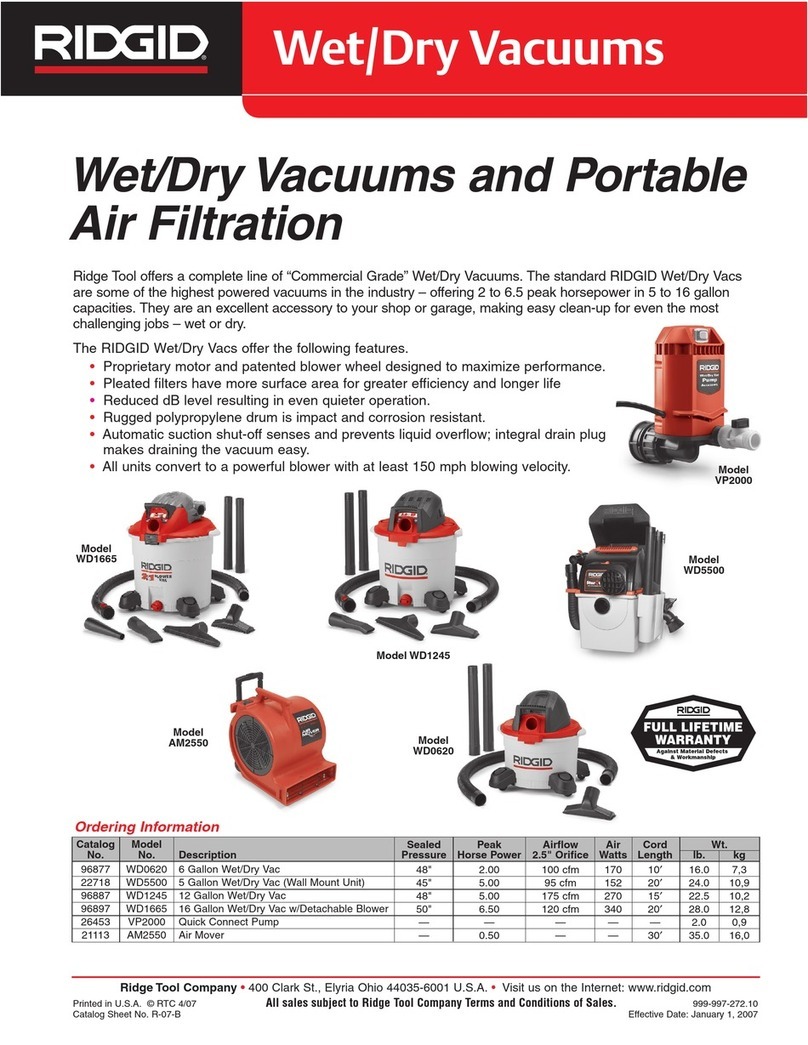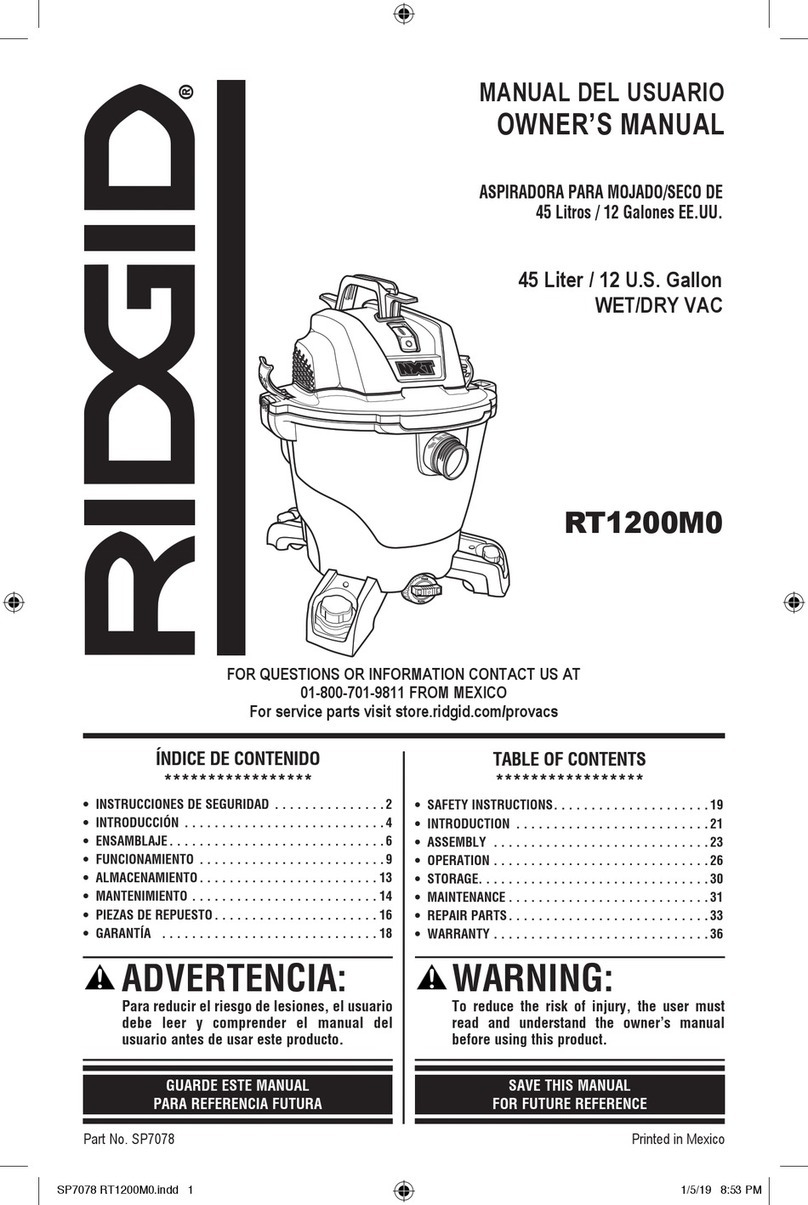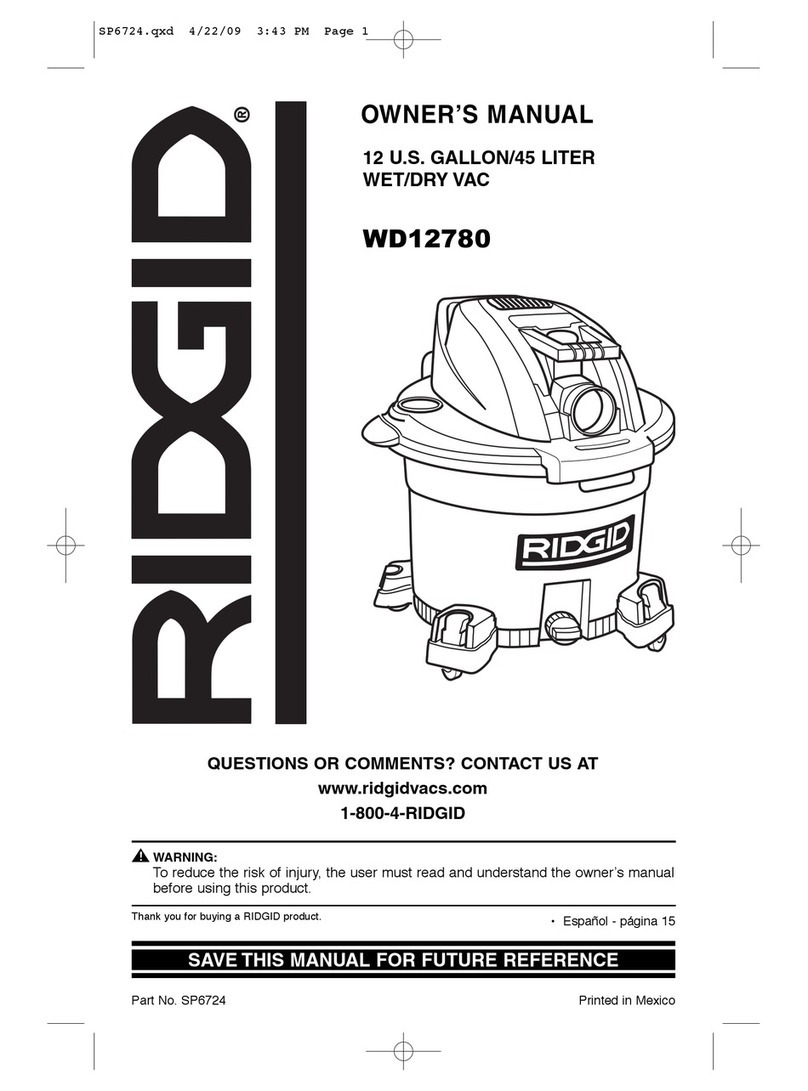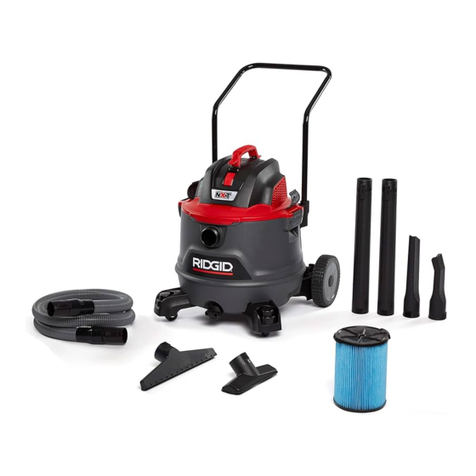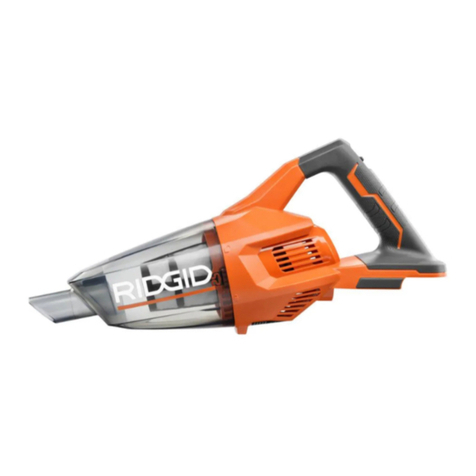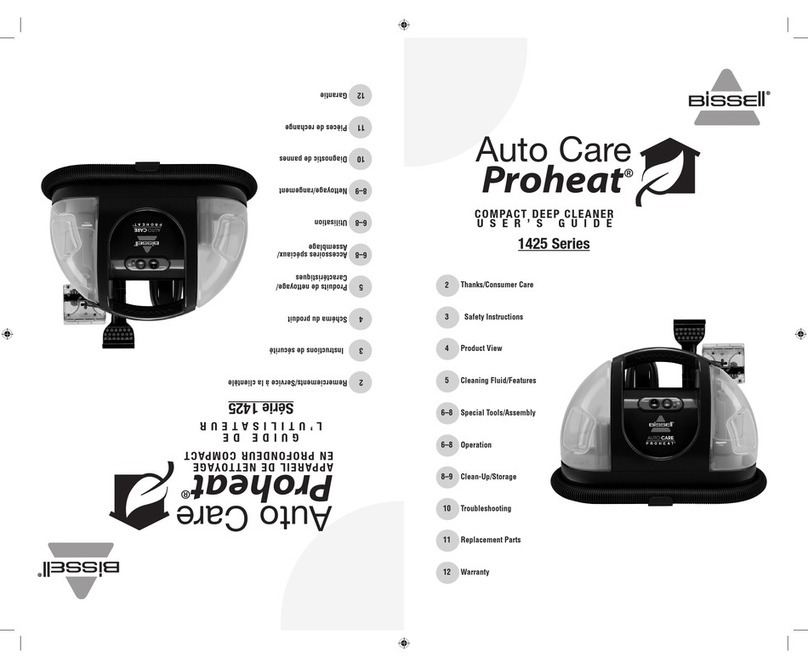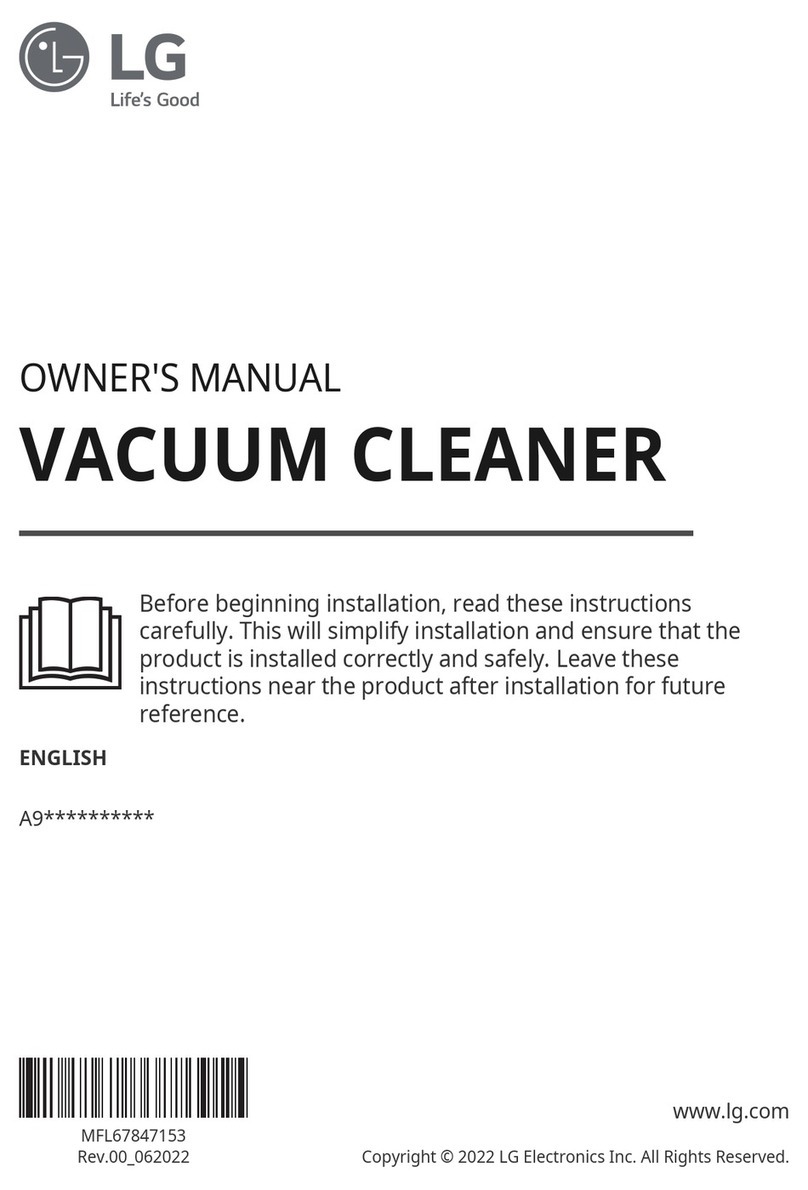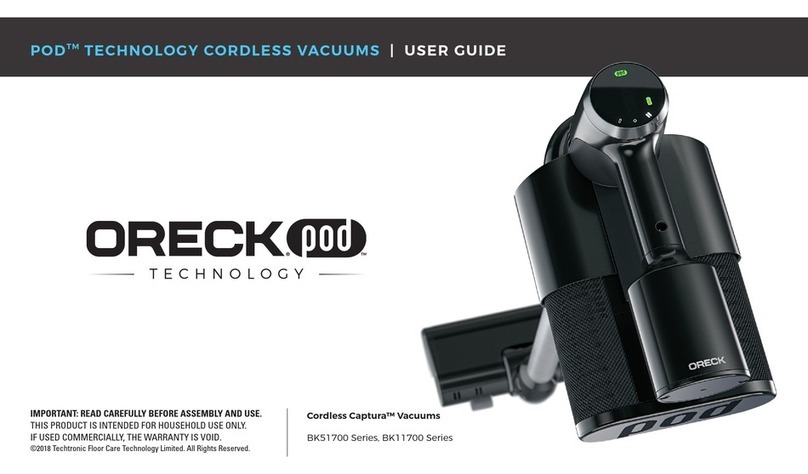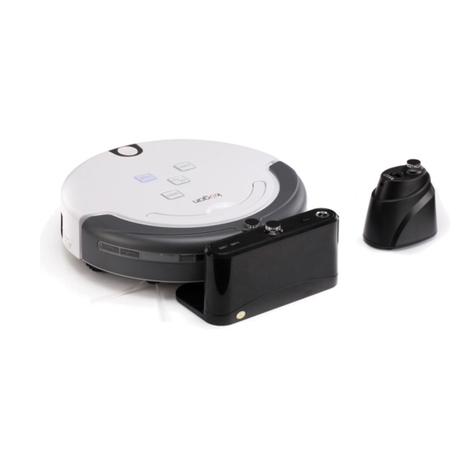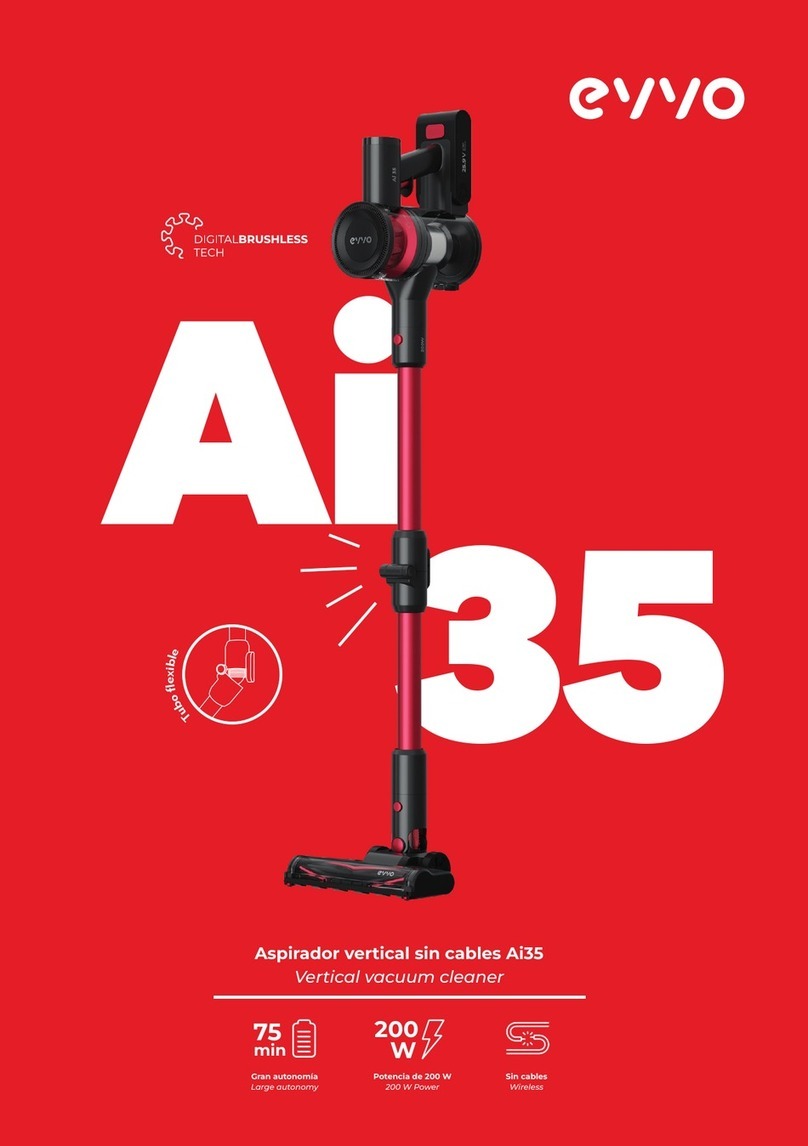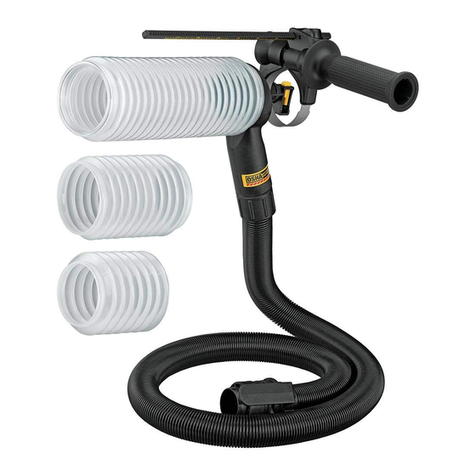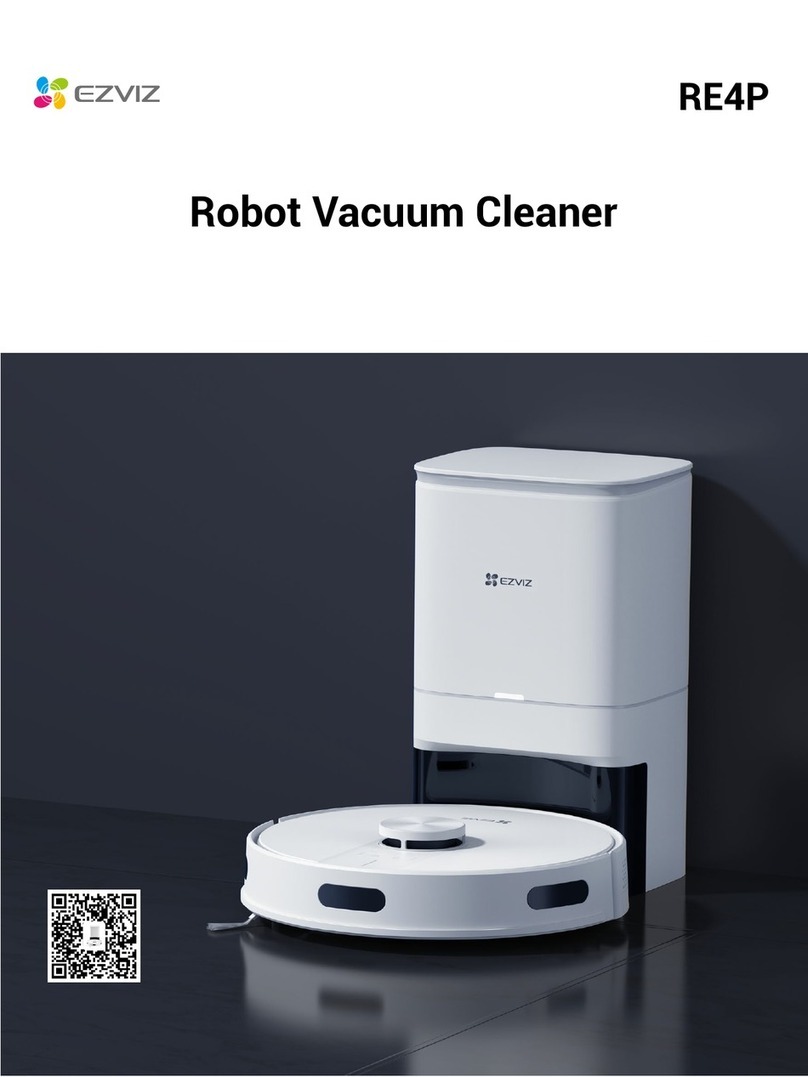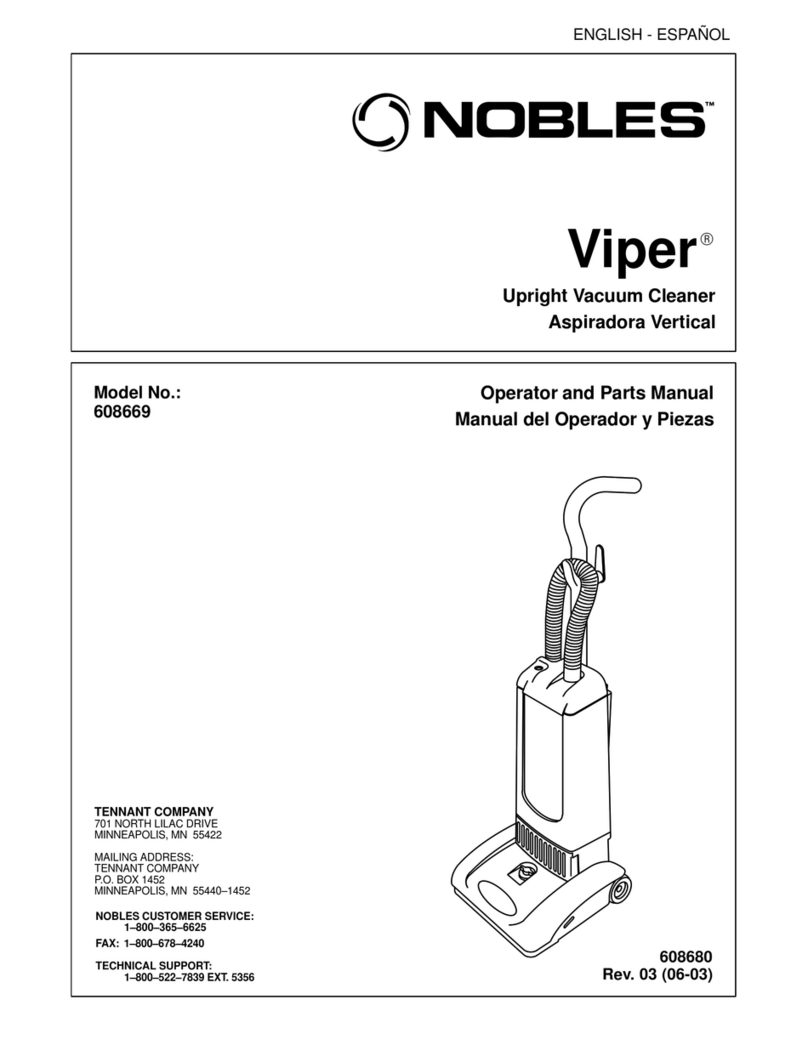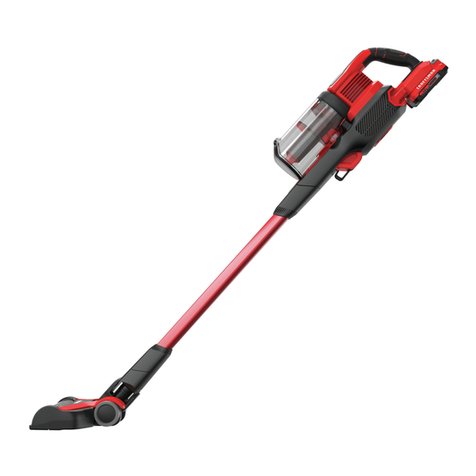
3
Do not allow to be used as a toy. Close
attention is necessary when used by or
near children.
Do not use this Wet/Dry Vac with a torn fil-
ter or without the filter installed except for
vacuuming liquids as described in the
operation section of this manual.
Do not leave Wet/Dry Vac when plugged
in. Unplug fromoutlet whennot in use and
before servicing. Turn off Wet/Dry Vac
before unplugging.
To reduce the risk of injury from acciden-
tal starting, unplug power cord before
changing or cleaning filter.
Do not unplug by pulling on cord. To
unplug, grasp the plug, not the cord.
Do not use with damaged cord, plug or
other parts. If your Wet/Dry Vac is not
working as it should, has missing parts,
has been dropped, damaged, left out-
doors, or dropped into water, return it to a
Authorized Service Center.
Do not pull or carry by cord, use cord as
handle, close a door on cord, or pull cord
around sharp edges or corners. Do not
run Wet/Dry Vac over cord. Keep cord
away from heated surfaces.
Do not handle plug or the Wet/Dry Vac
with wet hands.
Do not put any object into ventilation open-
ings. Do not vacuum with any ventilation
openings blocked; keep free of dust, lint,
hair or anything that may reduce air flow.
Keep hair, loose clothing, fingers, and all
parts of body away from openings and
moving parts.
To reduce the risk of falls, use extra care
when cleaning on stairs.
This Wet/Dry Vac is double-insulated,
eliminating the need for a separate
grounding system. Use only identical
replacement parts. Read the instructions
for Servicing Double-Insulated Wet/Dry
Vacs before servicing.
Use this Wet/dry Detachable Blower Vac
as described in this manual.
When using as detached blower:
• Turn unit off before setting on ground or
releasing grasp from handle.
• Do not use on wet surfaces, electric
shock could occur.
• Direct air discharge only at work area.
• Do not direct air at bystanders.
• Keep children away when blowing.
• Do not use blower for any job except
blowing dirt and debris.
Observe the following warnings that
appear on the motor housing of your Wet/
Dry Vac.
DOUBLE INSULATED
GROUNDING NOT REQUIRED
WHEN SERVICING USE ONLY
IDENTICAL REPLACEMENT PARTS
WARNING: To reduce the risk of
electric shock- do not expose to
rain-store indoors.
WARNING: For your own safety,
read and understand owner’s man-
ual. Do not pick up hot ashes, coals,
toxic, flammable or other hazard-
ous materials. Do not use around
explosive liquids or vapors.
SAVE THESE INSTRUCTIONS
The operation of any utility vac or blower
can result in foreign objects being blown into
the eyes, which can result in severe eye
damage. Always wear safety goggles, not
glasses, complying with ANSI Z87.1 (or in
Canada CSA Z94-3-M88) shown on pack-
age. Everyday eyeglasses have only impact
resistant lenses. They are not safety
glasses. Safety Goggles are available at
many local retail stores. Glasses or goggles
not in compliance with ANSI or CSA could
seriously hurt you when they break.
To reduce the risk of hearing damage,
wear ear protectors when using the vac
for extended hours or when, using it in a
noisy area.











